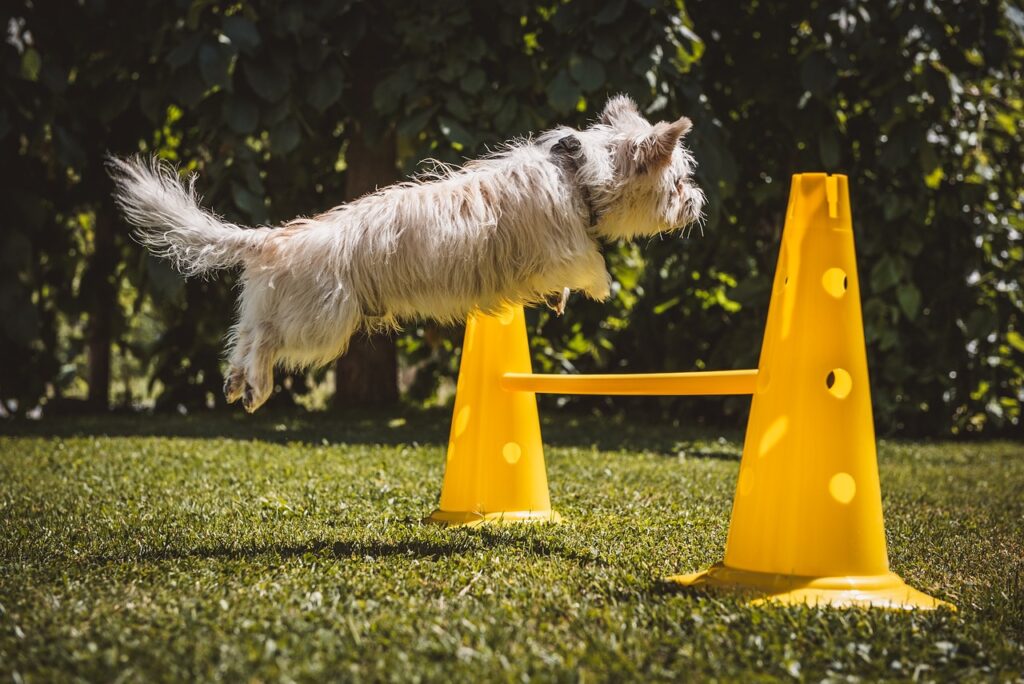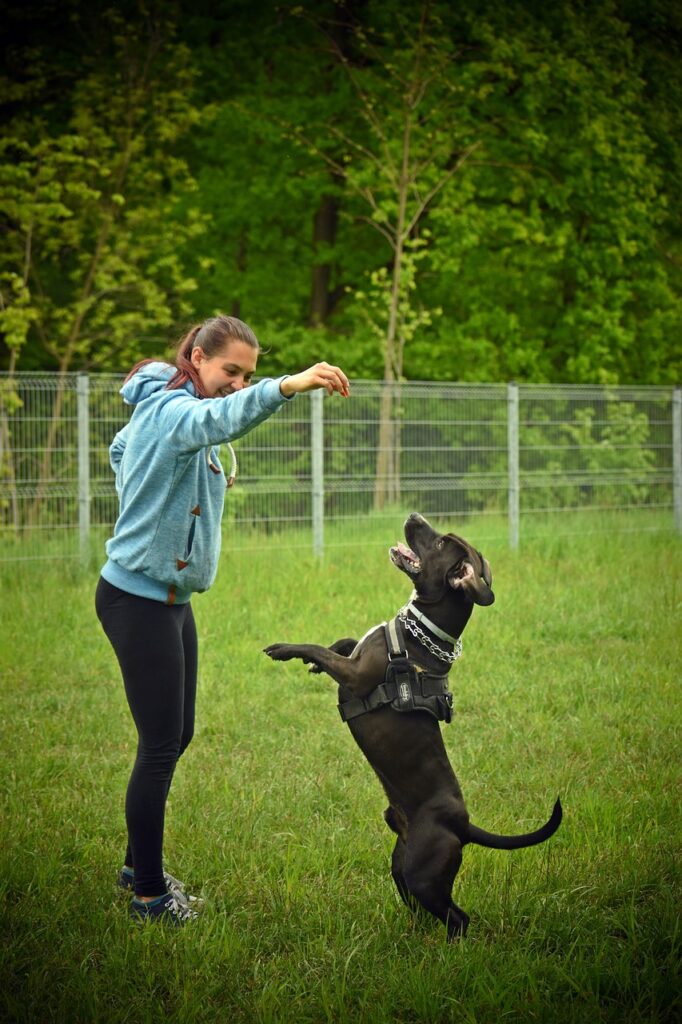Whether you’re dealing with a mischievous puppy, a stubborn cat, or even a clever parrot, understanding the principles of animal training and behavior is crucial. Let’s dive into this fascinating world and explore how you can create a harmonious household with your pet through effective training and behavior management.
🐾 The Basics: Understanding Pet Psychology
Before we jump into specific training techniques, it’s essential to grasp the fundamentals of pet psychology. This understanding forms the foundation of all successful training and behavior modification efforts.
🧠 How Pets Think: A Window into Their World
Pets, like humans, are driven by instincts, emotions, and learned behaviors. However, their perception of the world is quite different from ours.
For instance:
- Dogs are pack animals and often look to their human family as their pack
- Cats are territorial and value their independence
- Birds are highly social and can form strong bonds with their human caretakers
Understanding these basic drives can help you tailor your training and behavior management approaches.
🎭 The Language of Pets: Decoding Body Language
A crucial aspect of training and behavior management is learning to read your pet’s body language. This non-verbal communication can tell you a lot about your pet’s emotional state and intentions.
- A wagging tail doesn’t always mean happiness (it can indicate arousal or even aggression)
- Whale eye (showing the whites of their eyes) often indicates stress or discomfort
- A twitching tail often signals irritation or overstimulation
- Slow blinking is a sign of trust and affection
Learning to interpret these signals can help you respond appropriately and prevent behavioral issues before they escalate.

🍖 Positive Reinforcement: The Golden Rule of Training
When it comes to pet training and behavior modification, positive reinforcement is king. This approach focuses on rewarding desired behaviors rather than punishing unwanted ones.
🏆 Why It Works: The Science Behind Positive Reinforcement
Positive reinforcement works because it creates a positive association with the desired behavior. When your pet performs a behavior you like, they receive a reward (treats, praise, play). This makes them more likely to repeat the behavior in the future.
I once had a dog who was terrified of the vacuum cleaner. Instead of forcing him to “get over it,” we used positive reinforcement. Every time the vacuum came out, he got his favorite treats. Soon, he was wagging his tail at the sight of the vacuum!
🎯 Timing is Everything: The Art of Reward Delivery
For positive reinforcement to be effective, timing is crucial. The reward must come immediately after the desired behavior. Even a few seconds delay can make it less effective.
This is where clicker training can be helpful. The click marks the exact moment of the desired behavior, allowing for precise timing even if the treat comes a moment later.
For more on the science of positive reinforcement, visit the Association of Professional Dog Trainers website: https://apdt.com/resource-center/positive-reinforcement-in-dog-training/
🚫 Common Behavioral Issues: Tackling the Tough Stuff
Even with the best training, pets can develop behavioral issues. Let’s look at some common problems and how to address them using positive training and behavior modification techniques.
🐕 Leash Pulling: Taking the Lead
Leash pulling is a common issue that can make walks stressful for both you and your dog. Here’s a positive approach to tackle this:
- Stop moving when your dog pulls
- Wait for them to create slack in the leash
- Reward them with treats and praise when they return to your side
- Resume walking
Consistency is key. It may take time, but your dog will learn that walking nicely beside you is more rewarding than pulling ahead.
🐈 Litter Box Avoidance: Thinking Outside the Box
When cats stop using their litter box, it’s often a sign of an underlying issue. Before assuming it’s a behavioral problem, rule out medical causes with a vet visit.
If it’s behavioral, consider:
- Cleaning the box more frequently
- Trying different types of litter
- Providing more litter boxes (the rule of thumb is one per cat, plus one extra)
Remember, punishment is never the answer for litter box issues. It can create negative associations and make the problem worse.
🦜 Excessive Screaming in Birds: A Squawking Matter
Loud vocalizations are natural for many bird species, but excessive screaming can be a problem. To address this:
- Identify triggers for the screaming (are they seeking attention, bored, or scared?)
- Provide plenty of mental stimulation and interaction throughout the day
- Reward quiet behavior with treats and attention
- Ignore screaming (unless it’s a sign of distress)
Consistency and patience are crucial in modifying this behavior.
For more specific behavior modification techniques, the American Society for the Prevention of Cruelty to Animals (ASPCA) offers a wealth of resources: https://www.aspca.org/pet-care/dog-care/common-dog-behavior-issues
🏫 Basic Obedience: Building a Foundation
Basic obedience training is essential for all pets, especially dogs. It provides mental stimulation, strengthens your bond, and makes your pet safer and more manageable.
🎓 The Core Commands: Starting Strong
Every dog should know these basic commands:
- Sit
- Stay
- Come
- Leave it
- Down
Let’s break down the “Sit” command as an example:
- Hold a treat close to your dog’s nose
- Move the treat slowly over their head
- As their head tilts back to follow the treat, their bottom will naturally lower
- As soon as their bottom touches the ground, say “Sit” and give the treat
Remember, keep training sessions short (5-10 minutes) and fun!

🐱 Yes, You Can Train Cats!
While cats have a reputation for being untrainable, that’s far from the truth. Many cats can learn commands like:
- Come
- Sit
- High five
- Use a scratching post
The key is to use rewards they value (often special treats or play) and keep sessions very short.
🧠 Mental Stimulation: A Tired Pet is a Good Pet
Physical exercise is important, but mental stimulation is equally crucial for pet training and behavior management. A bored pet is more likely to develop behavioral issues.
🧩 Puzzle Toys: Engaging the Problem Solver
Puzzle toys are a great way to keep your pet’s mind active. They simulate the mental challenge of hunting for food in the wild.
Some ideas:
- Kong toys filled with frozen treats for dogs
- Food puzzles for cats
- Foraging toys for birds
📚 Trick Training: Never Too Old to Learn
Teaching your pet new tricks isn’t just for show – it’s a fantastic form of mental stimulation. Plus, it’s a great way to bond with your pet.
Some fun tricks to try:
- Spin
- Play dead
- Wave
- Fetch specific toys by name
Remember, the process of learning is often more important than the end result. Enjoy the journey!
🏠 Creating a Pet-Friendly Environment
Sometimes, the key to managing pet behavior is modifying their environment rather than the pet themselves.
🛋️ Pet-Proofing: Setting Your Pet Up for Success
Just like child-proofing, pet-proofing your home can prevent many behavioral issues before they start. Consider:
- Securing trash cans to prevent scavenging
- Using bitter apple spray on furniture to discourage chewing
- Providing plenty of appropriate scratch surfaces for cats
😌 Safe Spaces: Everyone Needs a Retreat
Ensure your pet has a quiet, comfortable space they can retreat to when feeling overwhelmed. This could be a crate for a dog, a high perch for a cat, or a covered cage area for a bird.
Respecting your pet’s need for alone time can prevent stress-related behavioral issues.
❓ FAQs: Your Burning Questions About Pet Training and Behavior
Q: At what age should I start training my pet?
A: It’s never too early to start training! Puppies and kittens can start learning basic commands and house rules as soon as they come home. For older pets, remember the saying “you can’t teach an old dog new tricks” is a myth – pets can learn at any age.
Q: How long does it take to train a pet?
A: Training is an ongoing process throughout your pet’s life. Basic commands might be learned in a few weeks, but reinforcement and learning new skills should continue indefinitely.
Q: What if positive reinforcement isn’t working?
A: If you’re not seeing results, consider:
- Is your timing correct?
- Are you using rewards your pet values?
- Are you being consistent? If you’re still struggling, consider consulting a professional trainer or behaviorist.
Q: Can I train my pet myself, or do I need professional help?
A: Many pet owners successfully train their pets at home. However, professional help can be beneficial, especially for complex behavioral issues or if you’re new to pet ownership.
Q: How do I stop my pet from begging for food?
A: The key is consistency. Never feed your pet from the table or while you’re eating. Instead, provide their meals at set times in their own bowl. If they beg, ignore the behavior completely.
🎉 Conclusion: The Journey of Pet Training and Behavior
Training and behavior management is an ongoing journey that lasts throughout your pet’s life. It requires patience, consistency, and a lot of love, but the rewards are immeasurable.
Remember, every pet is unique. What works for one might not work for another. Be patient with your pet and with yourself as you navigate this journey together.
By understanding your pet’s psychology, using positive reinforcement techniques, addressing behavioral issues promptly, and providing plenty of mental stimulation, you’re setting the foundation for a harmonious relationship with your furry (or feathered) friend.
So, are you ready to embark on this exciting journey of pet training and behavior management? Your pet is eager to learn and bond with you – let the adventure begin!

